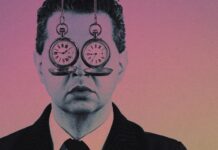Eyesight is one of the five foremost senses of the human body. It is also one of the easiest senses to get damaged too. To curb this damage, there can be a plethora of things that can be done, like wearing spectacles, wearing trendy sunglasses with power lenses, or wearing eye lenses.
While many people consider wearing lenses a hassle, it is one of the most widely accepted methods of coping with eye defects, as they cannot be scratched or broken as easily as eyeglasses, and last much longer. This article highlights the types of eye lenses that exist for use, which you can use if ever need be.
Single Vision Lenses
Single Vision Lenses are one of the most common lenses. They are made for one consistent focal power to correct a certain condition. This can be myopia, hypermetropia, or astigmatism. Most reading glasses use single vision lenses, these prescription glasses are to be used in certain conditions only. It has various benefits in your daily life, that include:
- It provides an acute vision and improves your eye health by improving your quality of life. It improves visual health by reducing strain on the eyes for certain activities.
- It reduces migraines that the user of these lenses might have due to the power in your eyes. This too reduces the stress on your eyes and enables you to see clearly and better.
- It protects you from any kind of dust or foreign particles from entering your eyes. This is done by all forms of lenses, but it is an advantage that just cannot be ignored.
Progressive lenses
Have you ever seen the glasses that your elders use? They are the perfect examples of Progressive lenses, they have a ‘progressive’ structure, with the focal line of the lens changing from the top to the bottom of the lens. This means that it enables the lens to rectify more than one eye condition at a time. They have multiple benefits which include:
- It helps the user of the glasses to see clearly at all visions. Be it far or near, myopia or hypermetropia, these glasses are bifocal or trifocal which lets the user manage the focal length of their spectacles.
- It eliminates any kind of ‘image jump’ that can occur in these bifocals or trifocals. Image jump basically is a phenomenon where the apparent position of an object shifts in front of your eyes.
Concave and Plus lenses
Concave and plus lenses are forms of single focus lenses. Concave lenses help in curing myopia while plus lenses help in curing hypermetropia. While concave lenses have a concave shape, which means that they are thicker at the edge and narrow at the middle, and plus lenses are convex shaped which means they are narrow at the edges and thick in the middle. Concave lenses are meant to bend light outwards, while convex lenses are meant to bend light inwards.
They are both single focus lenses, which means they have almost all the same attributes while curing different ailments of the eyes. It has various advantages like:
- It improves the quality of vision a person has. It reduces migraines and reduces stress on the eyes. They are cheap too, which means that it is easy to get while also being really useful to the user.
- It saves the eyes from any kind of foreign particles, which is the secondary use of all kinds of spectacles. Concave or plus, it doesn’t matter much, it saves the eyes from dust and that can harm the eye.
Cylindrical lenses
Cylindrical lenses are designed for a special ailment of the eye called astigmatism. This happens when the cornea of the eye is oval, causing the eyesight to weaken drastically. Cylindrical lenses are the most common way to counter astigmatism. You can use a variety of frames for these lenses. Rather than focusing the light on a point, it focuses the light in a line. It’s a peculiar lens, designed for a peculiar ailment.
Conclusion
There are a variety of diseases that can happen to the eye. To counter these, there are a variety of lenses and how you use them is totally up to your prescription (and yourself, you need to use them.) So, take care of your eyes, and all that’s related to it, for the sense of vision is one of the most important primary senses.



































































